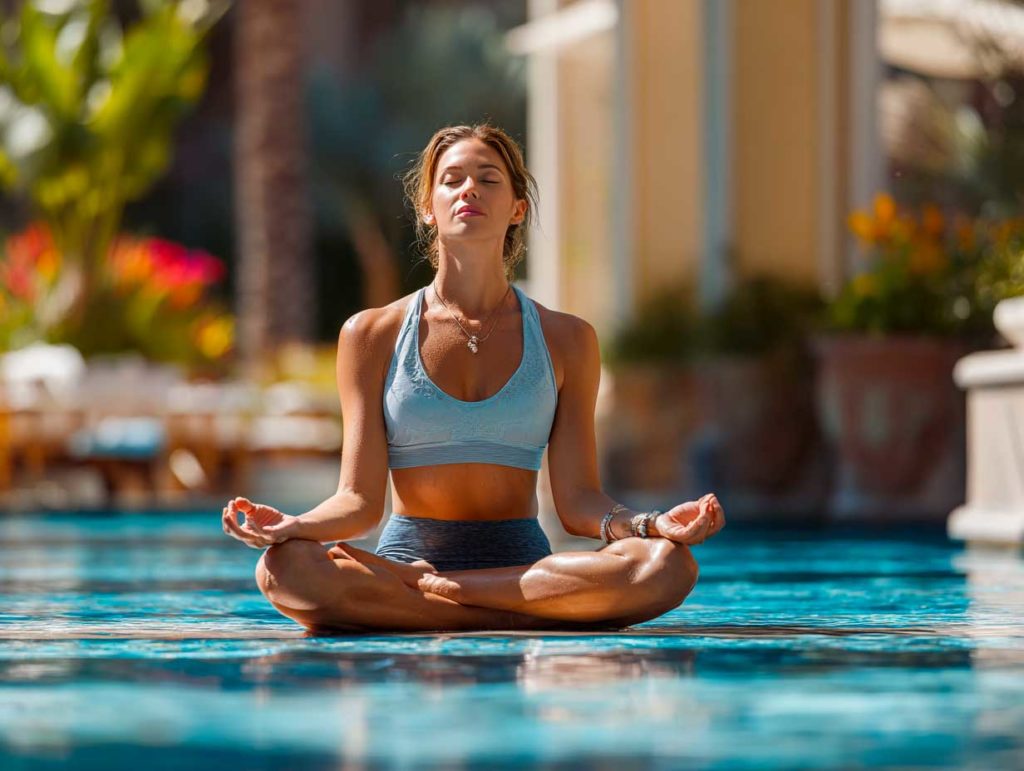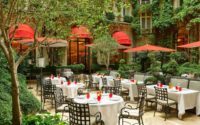The “Ozempic Effect” is reinventing luxury wellness tourism
The integration of GLP-1 treatments into high-end vacations is redefining health tourism, with tailor-made programs and sports and nutritional coaching.
Wellness tourism is evolving. By 2025, the phenomenon known as the “Ozempic Effect” will transform the offerings of luxury resorts. Renowned resorts in the United States, such as Mountain Trek (British Columbia) and The Ranch (California), as well as the Pritikin Longevity Center (Florida), are now incorporating GLP-1 treatments into their programs. These establishments offer specific medical support, including nutritional coaching, muscle strengthening, digestive management, medical monitoring, and post-stay programs. The prices reflect this sophistication, ranging from €6,900 to over €14,000 for a stay. At the same time, stakeholders are analyzing how these drugs are changing travelers’ consumption patterns: less spending on traditional dining, more interest in protein-rich alternatives and dynamic activities. This shift marks a repositioning of wellness tourism in search of measurable effectiveness and targeted experiences.
The transformation of high-end wellness stays under the influence of GLP-1
These programs welcome clients who are already taking GLP-1 (Ozempic, Mounjaro, etc.) or who wish to start under medical supervision. Mountain Trek has designed specific programs that include personalized monitoring, targeted nutrition, intensive training, relaxation, and post-return coaching. The week-long stay commonly exceeds $7,900 per person.
The Ranch, which is in high demand from clients who have already achieved significant weight loss with GLP-1, offers a six-night private program for €12,200, combining a nutritionist, coach, and strength training.
At the Pritikin Longevity Center, around 10% of clients are on GLP-1; a two-week stay starts at $14,000, including advanced medical diagnostics (blood tests, DEXA, stress tests) and a diet called “GLP-1 Plate,” which is higher in protein to preserve lean body mass.
Impacts on consumption habits and the tourist experience
According to PwC, approximately 1 in 8 Americans (31 million) have taken a GLP-1. These travelers reduce their food spending by an average of 11% and their beverage spending by 9%, and some stop drinking alcohol altogether.
But their appetite does not disappear: they are looking for protein-rich, low-sugar snacks. Their preferences are shifting from the “foodie scene” to a more targeted, authentic cuisine that is adapted to the constraints of their treatment.
In terms of leisure activities, there is a growing trend toward active physical activities (Pilates, weight training, personalized coaching) to offset the risk of muscle loss associated with medication.

Market outlook and transformation of wellness tourism
More broadly, wellness tourism is a rapidly growing market: between 2024 and 2032, it is expected to grow at an average annual rate of 9.88%, from $1,013.86 billion to $2,154.41 billion.
Demand is shifting towards hyper-personalization thanks to technologies (AI, biometric data), more sustainable stays, and hybrid experiences combining care, culture, and nature. The “Ozempic Effect” fits into this logic: offering travelers undergoing treatment a targeted, medicalized, and measured experience.
High-end retreats can no longer be content with just pampering or relaxation. They must meet demanding, medicalized, and targeted expectations. Prices remain very high and exclude the majority of travelers. But this positioning reflects a value-added strategy: offering integrated care, backed by medical evidence, in line with new expectations and health journeys.
The challenge is to go beyond simple relaxation and elegance to become a long-term partner in a health journey, while avoiding the illusion of isolated effectiveness. These programs must prove that they are more than just a complement to treatment: they must be a sustainable lever for transformation.
We are an independant magazine of the best hotels in the world.

